
Whether you need to heat your home for the winter or simply enjoy lighting a fire occasionally, it's helpful to know the cost of a cord of wood in your area.
Baseboard showdown: smooth versus natural grain
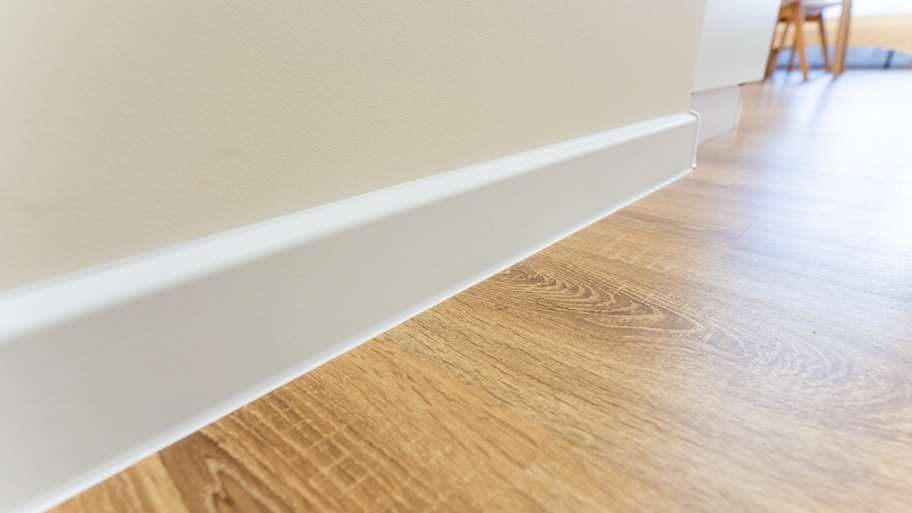

Pine baseboards feature a warm, natural wood grain, while MDF has a smooth, clean appearance.
MDF and pine baseboards are affordable than hardwoods, with MDF costing $1 to $1.40 per linear foot and pine ranging between $1.40 $1.85 per linear foot.
MDF lacks durability and is best suited for rooms with less foot traffic.
Pine baseboards work well in high-traffic areas as it’s more durable against normal wear and tear.
Staying on budget when building or renovating a home can be a concern for many homeowners. Two types of wood baseboards considered for their budget-friendly price tag and wood style are medium-density fiberboard (MDF) and pine. Compare the pros and cons of MDF baseboards versus pine to best suit your design, durability, and budget preferences.
MDF and pine are two types of baseboards for homes looking for a low-cost wood style. Unlike expensive hardwoods like oak and maple, these options aren't the best wood for baseboards, but are favored for their affordability. MDF is an engineered wood material composed of wood fibers and resin, providing a smooth, uniform surface that's ideal for painting and cost-effective. Pine, a natural softwood, has a more traditional wood grain appearance and is stronger and more impact-resistant than MDF.
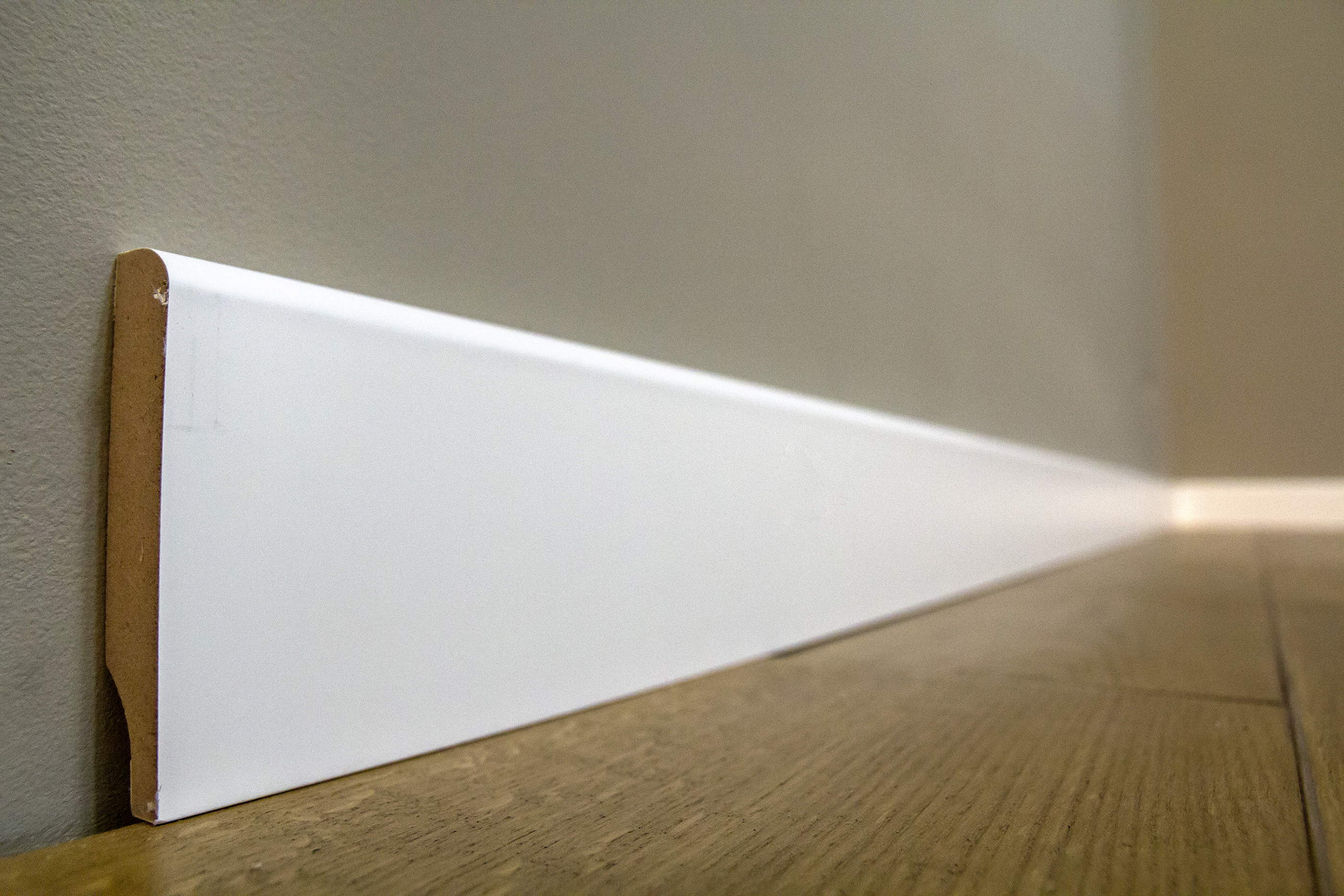
MDF baseboards are a budget-friendly trim option that's easy to cut, install, and paint. The material doesn't have knots or grain like natural wood, which eliminates imperfections and complements modern or minimalist designs. MDF baseboards aren’t as moisture-resistant or ding-resistant as solid wood, so they’re best used in dry indoor areas like bedrooms or offices.
| Pros | Cons |
|---|---|
| Affordable | Not moisture-resistant |
| Smooth finish | Lacks durability |
| Easy installation | Can't be stained |
Best for:
Homeowners looking to save on trim without sacrificing a clean, finished look.
Rooms and areas with minimal moisture exposure.
Modern or minimalist interior designs.
The most appealing feature of MDF baseboards is their affordability. MDF is significantly less expensive than solid wood, costing an average of $1 to $1.40 per linear foot. By comparison, the baseboard installation cost for oak and maple ranges between $2.50 and $5 per linear foot.
As an engineered wood, the material has a consistent, smooth appearance without the knots or grains that come with real wood. This makes the wood easier to paint and helps achieve a clean, modern appearance. Thanks to its ease of clean cutting without splintering, MDF installation is DIY friendly.
While affordable, MDF baseboards lack some of the benefits of real wood. The biggest limitation is their vulnerability to moisture. When exposed to water, MDF can swell or warp, making it a poor choice for bathrooms or kitchens. The material is prone to dents, chips, and damage from everyday impacts, especially in high-traffic areas or homes with pets and kids.
MDF baseboards are only suitable for painted finishes because they can't be stained like real wood, limiting design options for those who prefer a natural wood look. Its heavier weight can also make handling and installing long boards more challenging.
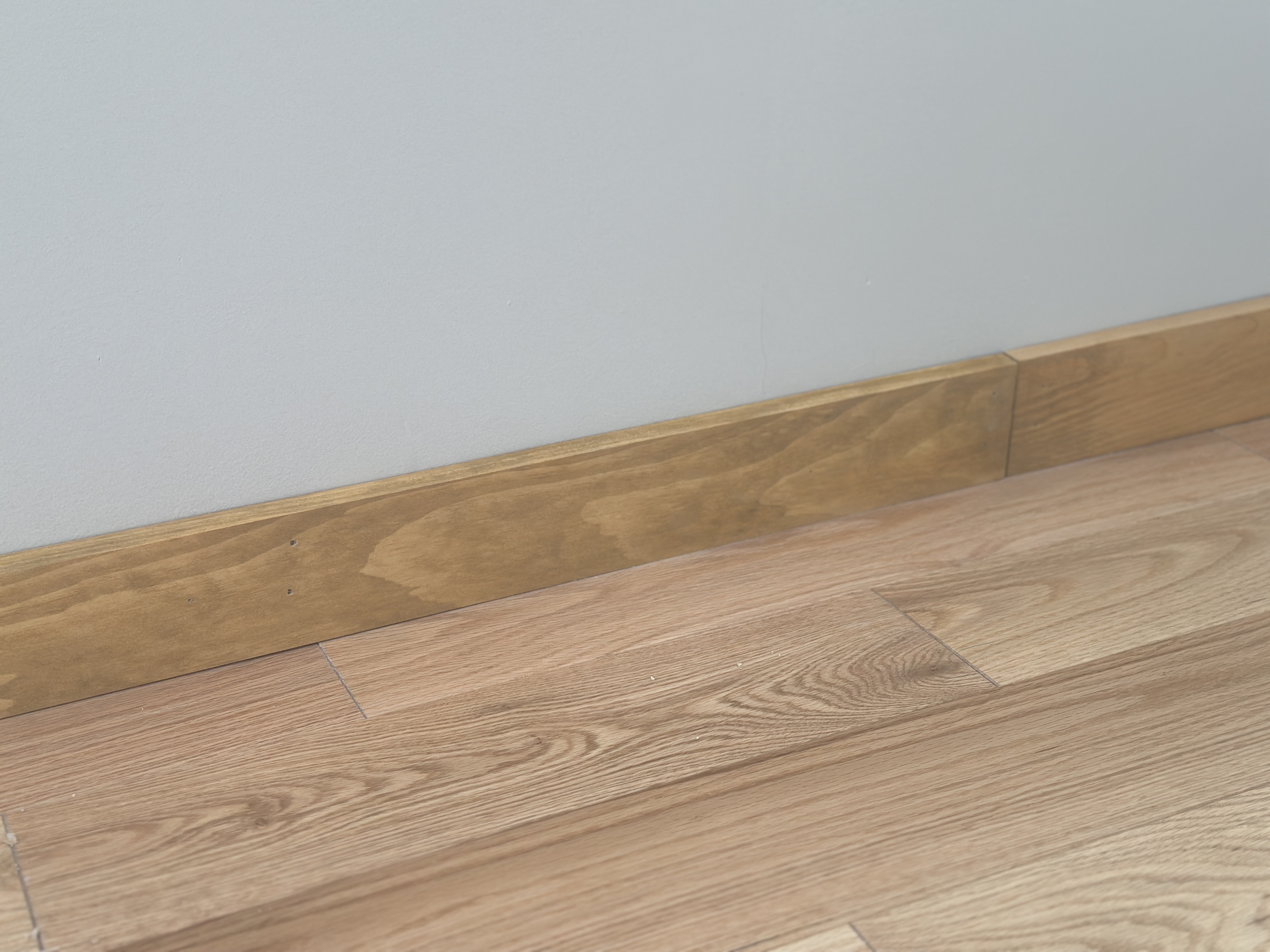
A natural softwood, pine baseboards offer a warm and traditional look. The versatile material works well in a variety of home styles and can be painted or stained, allowing for greater design flexibility. Pine is more durable than MDF baseboards and better suited for high-traffic areas. While pine is slightly more expensive than MDF, it's more affordable than other types of wood.
| Pros | Cons |
|---|---|
| Natural wood grain | Prone to warping |
| Lightweight | Less uniform appearance than MDF |
| More affordable than hardwoods | Contains knots |
Best for:
Showcasing wood grain and achieving a warm, rustic, or traditional look.
Blending affordability with durability
Custom baseboard finishing projects
Wood baseboards can be expensive, depending on the material. Pine baseboards blend the natural wood grain appearance with affordable prices. The material is slightly more expensive than MDF, costing between $1.40 and $1.85 per linear foot. As a lightweight material, pine is easy to work with during installation.
As a natural wood, pine adds warmth and character to a room and can be either stained to enhance its rustic charm or painted for a clean, classic finish. Pine is more resistant to dents and everyday wear than MDF, making it more suitable for high-traffic areas or homes with children and pets.
Because pine is a natural wood, it contains knots that can affect its appearance. In addition, extra prep work, such as sealing, is required to prevent paint or stain from bleeding through. It's best to hire a local baseboard installer rather than DIY if you plan to stain the baseboards because the prep work to maintain the natural wood appearance can be challenging.
While its grain and variation can be beautiful, this inconsistency may not appeal to those seeking a perfectly uniform look. Pine is more susceptible to expansion and contraction with changes in humidity, which can lead to warping or gaps if not properly sealed.
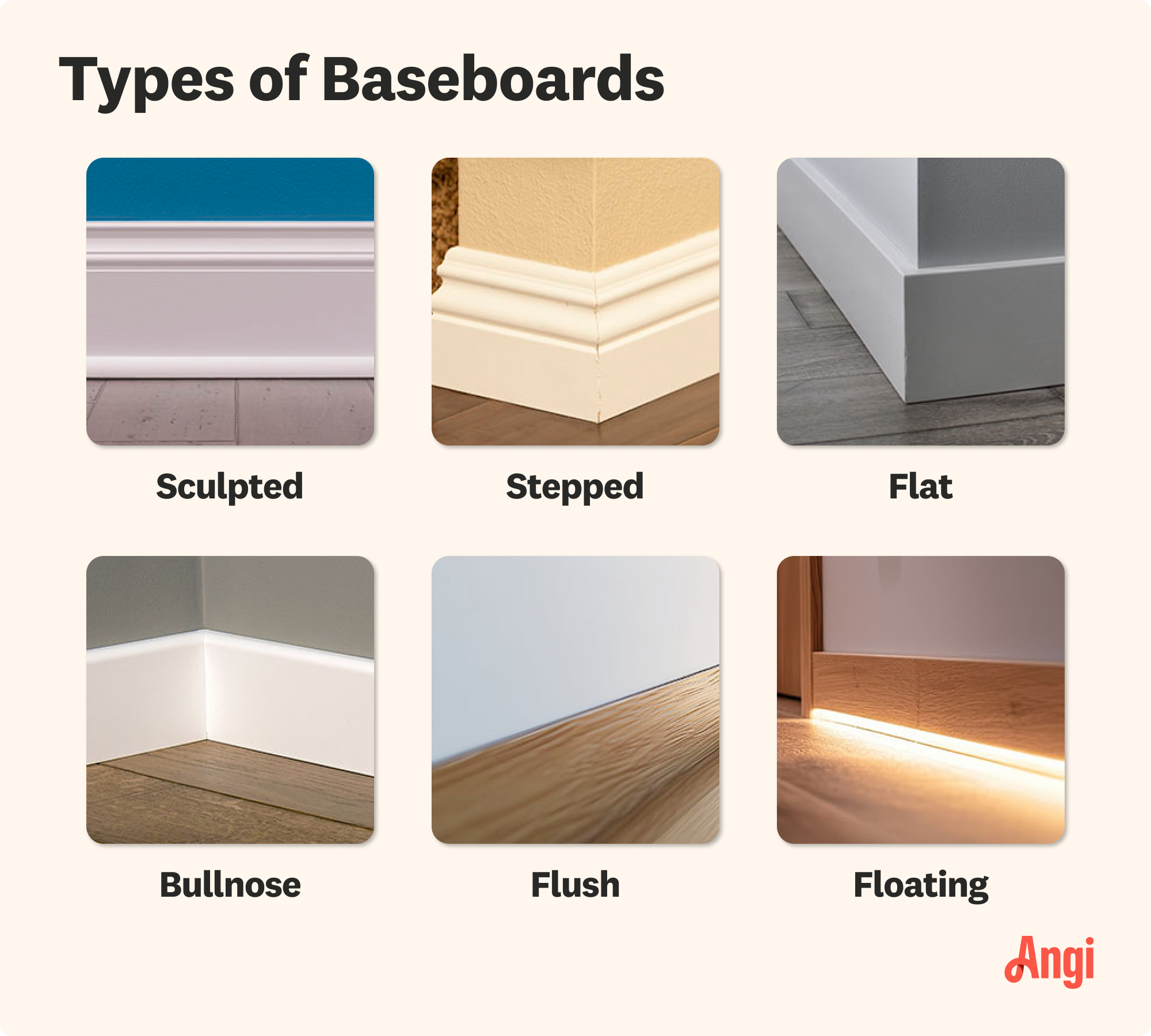
Deciding on MDF baseboards versus pine based on appearance is more of a personal preference. Pine is a good option if you're looking for a natural wood finish, while MDF baseboards are best if you want a more uniform and clean look.
Because pine can be stained and painted, while MDF is limited to paint-only finishes, it provides more customization options for homeowners. With pine, you can highlight the natural wood grain using light to dark stains or choose a painted finish to match your interior style. Its natural texture also allows for distressing, sanding, and refinishing if design tastes change over time.
As a natural wood, pine can withstand bumps, dents, and daily wear better than MDF, which tends to chip, dent, or break more easily. Pine can handle moisture better than MDF and would be the best baseboard for bathrooms. While not as hard as oak or other hardwoods, pine is still a solid softwood that holds up better in high-traffic areas and can last for many years.
MDF is a more affordable option compared to pine. MDF costs between $1 and $1.40 per linear foot, while pine can range between $1.40 and $1.85 per linear foot. However, both options are much more affordable than other wood baseboards. Hardwoods like poplar, oak, maple, or cherry cost between $1.90 and $10 per linear foot.
MDF is easier to DIY install, while pine is easier to repair over time. MDF’s smooth surface makes it simple to cut, nail, and paint, especially for beginners learning how to install baseboards. It doesn’t splinter like natural wood, so it’s forgiving during installation. However, MDF is more prone to chipping and denting, and once damaged, it’s harder to patch cleanly or sand without crumbling. While pine requires more care during installation due to knots and grain patterns, it's sturdier and easier to sand, fill, or refinish if scuffed or dented.
MDF’s smooth, painted surface is easy to wipe clean and doesn’t require much upkeep as long as it stays dry. It resists surface stains well and doesn't have the natural imperfections of wood that can trap dust or dirt, the way pine does.
Because pine is a natural wood, it’s viewed as a more premium, long-lasting material that adds character and quality to a space, factors that appeal to prospective buyers. Pine baseboards can also be stained or refinished to suit different tastes, giving them more design versatility over time. MDF is seen as a more budget-friendly, builder-grade option. While it can still look polished when painted, it lacks the perceived value and durability of real wood.
From average costs to expert advice, get all the answers you need to get your job done.

Whether you need to heat your home for the winter or simply enjoy lighting a fire occasionally, it's helpful to know the cost of a cord of wood in your area.

The cost to install wainscoting depends on labor, materials, and square footage. This guide will help you budget for your next project.
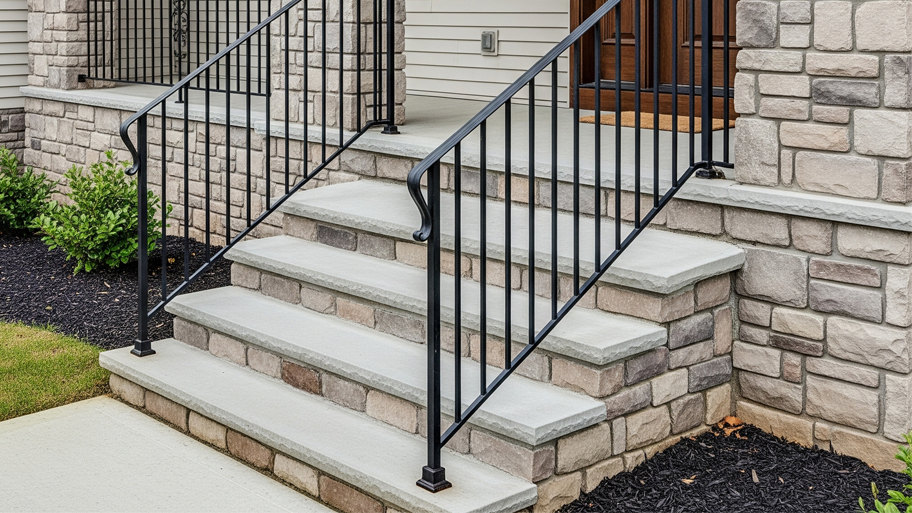
How much does outdoor railing installation cost? Find out the cost to install a railing on concrete steps, porches, and patios, including material and labor.

Coping, a common woodworking technique, is the secret to perfect inner corners with your trim. This guide will show you how to cope crown molding.
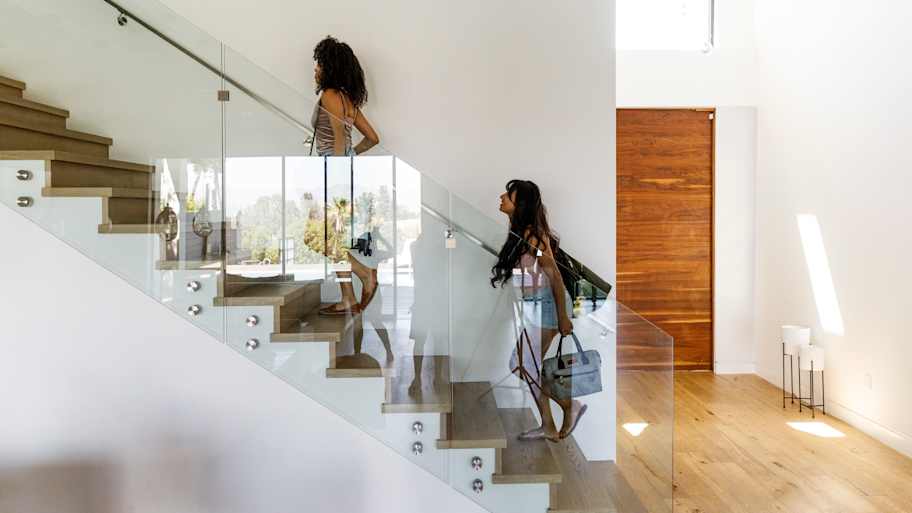
Your installed glass stair railing cost depends on factors such as materials, size, and complexity. Discover the ones that will affect yours the most.
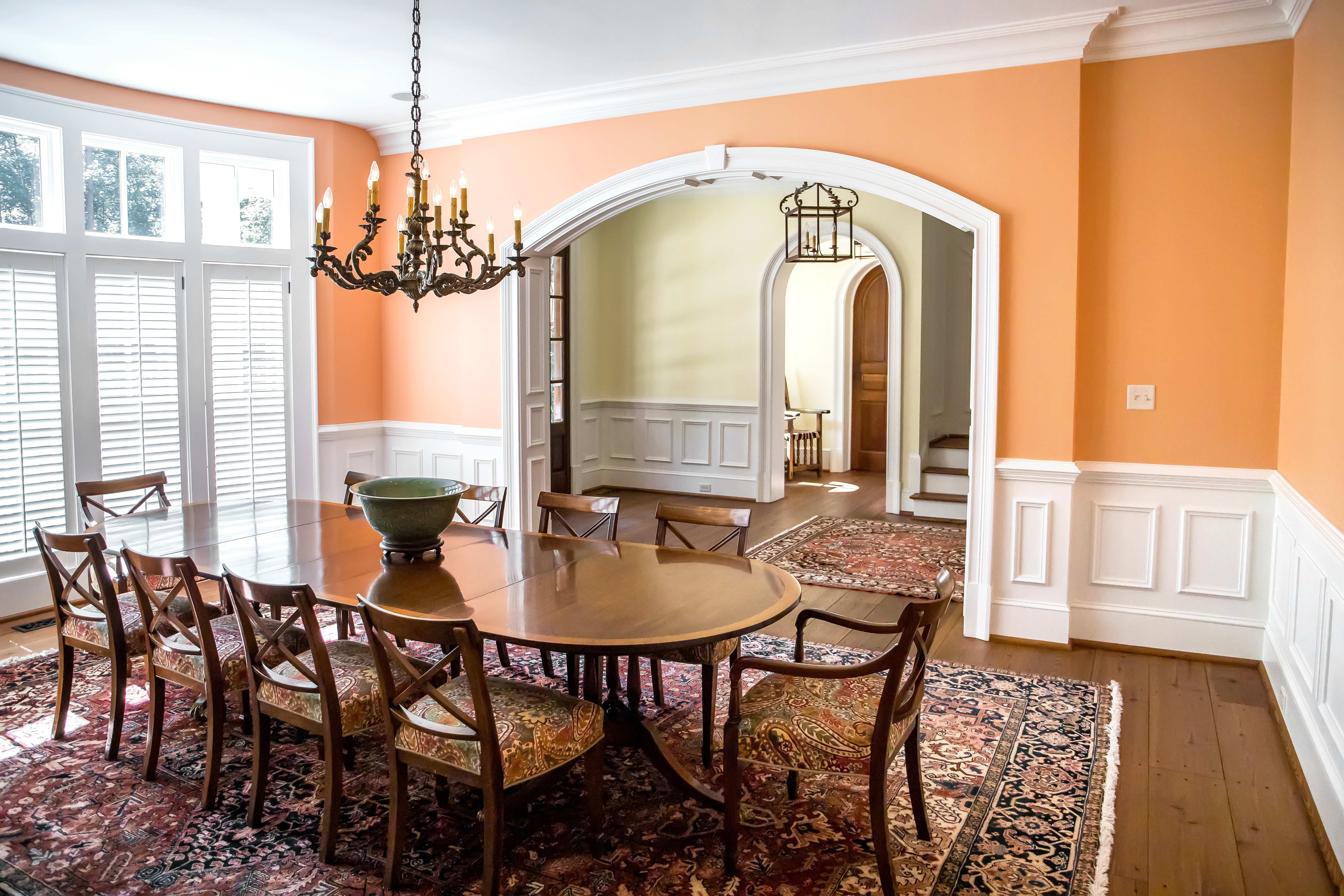
When comparing MDF versus wood crown molding, MDF is easier to install and costs slightly less, but natural wood pairs tradition with a timeless design appeal.